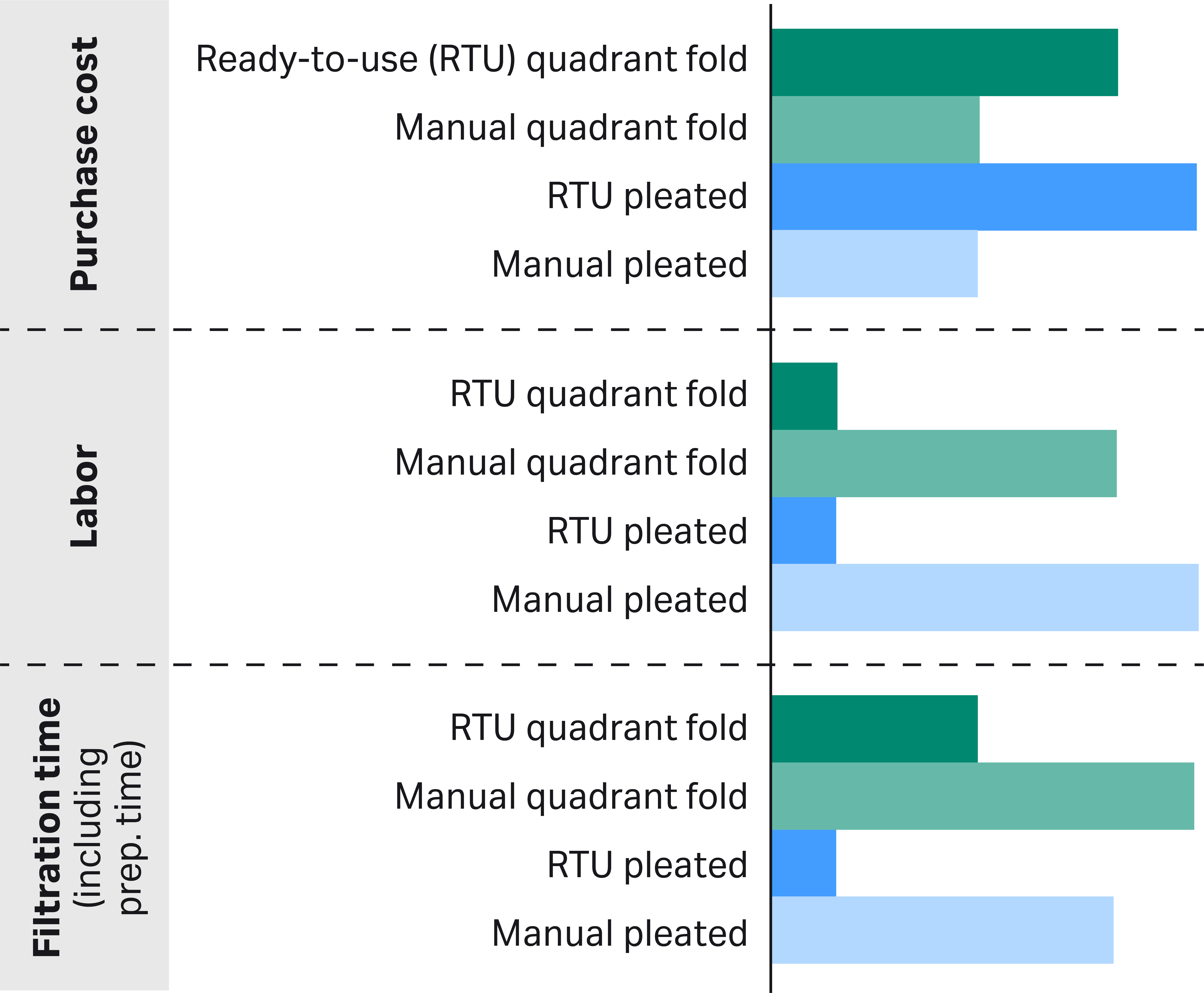While it’s easy to think of paper filtration as a simple technique, there are always opportunities to improve efficiency and result reproducibility through some small changes in your method and workflow. In this Paper filtration 101 blog series, I’ve covered some of the key considerations for choosing the most appropriate laboratory filter papers and funnels for your filtration needs.
I’ve also looked at some of the options available for folding filter paper cones for a conical funnel and practical considerations for quantitative analyses. In this blog, let’s focus on papers specially treated for high wet-strength and suggestions for using pre-folded filter paper.
To finish, I’ll give a roundup of some of the key things covered in this blog series to help keep your paper filtration step on track!
Using wet strengthened and hardened filter papers
Sometimes during filtration, there might be exceptionally heavy demand placed on the filter paper. For example, you might be applying a vacuum, or need to use hot solutions. In these situations, using a wet strengthened or a hardened filter paper can make a difference. Where normal filter paper material might not withstand the extra stress, wet strengthened and hardened papers are treated to provide high wet-strength. The latter offer high wet strength without any additives or synthetic resins.
Although these wet strengthened and hardened filter papers were primarily designed for use under vacuum, they can also be used in ordinary conical filter funnels too. You might consider using a high wet strength paper when you:
- Use reagents that could disintegrate an untreated paper.
- Need to scrape off precipitate or suspended matter.
- Are expecting a large bulk of precipitate and standard paper might not have the wet-strength to carry the load.
- Need to remove the paper and precipitate intact from the funnel.
Time to stop folding filter papers?
Both wet strengthened and standard papers are available in ‘prepleated’ and “prefolded” formats, that is, folded and ready to use. Our filtration product manager, Mohan, has discussed the pros and cons of using specially folded filter paper in his blog comparing quadrant and fluted filter paper, and ready-to-use formats.
Essentially, depending on your specific needs and application, sometimes it makes more sense to just purchase ready-to-use papers. They can save the time you might otherwise spend folding papers and minimize your overall filtration time compared to manually folded quadrants and pleats (Fig 1). They’re particularly useful when you filter many samples.
Fig 1. Comparison of key decision-making aspects of using pre-folded and manually folded filter papers
If you’re wondering whether you might need to combine hardened properties with prepleating, ‘dry’ organic solvents don’t generally affect the wet-strength of cellulose fiber filter paper. So, if that’s what you’re using, a standard non- strengthened hardened folded paper will work fine for large scale work.
If your solution ‘wets’ the paper though, wet strengthened hardened folded papers are the recommended option.
A roundup of the Paper Filtration 101 series
Over the course of this blog series, I’ve touched on quite a few aspects of laboratory filtration, from basic considerations to folding techniques. Take a look at the highlights below and see if there’s anything you might have missed:
Part 1: The introduction
In part 1, I summarized some of the key considerations when planning your filtration workflows, discussing how important it is to be aware that each type of sample is different, and that no single method is necessarily the best option in all cases.
So, consider, for example, whether you’ll be performing quantitative analysis, or if you need to do any purification or other preparative work. Vacuum filtration might be needed and it might be that the liquids you use can react with or affect the filter paper in other ways. These are all things that you can think about when working out the best way to set up your filtration.
Part 2: Properties of cellulose filters
Part 2 of the series looked more closely at cellulose filter papers and how different properties can influence your filter paper choice.
I focused on purity, discussing the effect of organic impurities and why you might not want to remove them under normal circumstances, as well as how to deal with inorganic impurities. Remember to take care during storage too, so that you minimize the potential for filter papers to pick up impurities from their environment.
Part 3: Folding filter papers
There are so many ways to fold a filter paper circle, with each lab often having its own style. Find some of the different ways of folding your filter papers and how you can achieve the perfect seal in a conical filter funnel in part 3. There are diagrams, instructions, and even a video.
Part 4: Using funnels
I talk a bit more about the perfect seal (and how to get it) in part 4. I look at using Büchner and Hartley funnels, specifically the filter support options they have and why it’s worth paying attention to the type you use.
Parts 5 and 6: Improving efficiency
Parts 5 and 6 cover the filtration workflow, with some top tips for boosting efficiency and results throughout. Part 5 focuses more on the filter paper itself, with some ideas for optimizing quantitative analysis. In part 6, I focus on considerations based on the sample and precipitate.
Hopefully, this series of blogs has given you a few tips and tricks for getting the most out of your paper filtration. Whatever your needs, we have the experience and expertise in laboratory filtration to help. So, find more tips and tricks in our laboratory filtration blogs and our knowledge center.
Or, if you’d like direct support with your filtration workflow, or are interested in finding out more about the filter paper options available, please contact our Scientific Support or your local Cytiva representative. You can also use our filter selector tool to help guide you through finding the right Whatman filter paper for your application.
